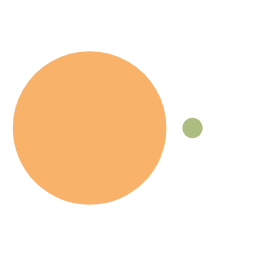我们在上面中已经简单知道了Mybatis是怎么使用的以及工作流程了,这次我们使用Mybatis来完成CRUD的操作,再次巩固Mybatis的开发步骤以及一些细节
7.1 增加学生
配置文件
<?xml version="1.0" encoding="UTF-8"?>
<!DOCTYPE configuration PUBLIC "-//mybatis.org//DTD Config 3.0//EN"
"http://mybatis.org/dtd/mybatis-3-config.dtd">
<configuration>
<!-- 加载类路径下的属性文件 -->
<properties resource="db.properties"/>
<!-- 设置一个默认的连接环境信息 -->
<environments default="mysql_developer">
<!-- 连接环境信息,取一个任意唯一的名字 -->
<environment id="mysql_developer">
<!-- mybatis使用jdbc事务管理方式 -->
<transactionManager type="jdbc"/>
<!-- mybatis使用连接池方式来获取连接 -->
<dataSource type="pooled">
<!-- 配置与数据库交互的4个必要属性 -->
<property name="driver" value="${mysql.driver}"/>
<property name="url" value="${mysql.url}"/>
<property name="username" value="${mysql.username}"/>
<property name="password" value="${mysql.password}"/>
</dataSource>
</environment>
<!-- 连接环境信息,取一个任意唯一的名字 -->
<environment id="oracle_developer">
<!-- mybatis使用jdbc事务管理方式 -->
<transactionManager type="jdbc"/>
<!-- mybatis使用连接池方式来获取连接 -->
<dataSource type="pooled">
<!-- 配置与数据库交互的4个必要属性 -->
<property name="driver" value="${oracle.driver}"/>
<property name="url" value="${oracle.url}"/>
<property name="username" value="${oracle.username}"/>
<property name="password" value="${oracle.password}"/>
</dataSource>
</environment>
</environments>
<mappers>
<mapper resource="zhongfucheng/StudentMapper.xml"/>
</mappers>
</configuration>
|
映射文件
<!-- namespace属性是名称空间,必须唯一 -->
<mapper namespace="StudentID">
<!-- resultMap标签:映射实体与表
type属性:表示实体全路径名
id属性:为实体与表的映射取一个任意的唯一的名字
-->
<resultMap type="zhongfucheng.Student" id="studentMap">
<!-- id标签:映射主键属性
result标签:映射非主键属性
property属性:实体的属性名
column属性:表的字段名
-->
<id property="id" column="id"/>
<result property="name" column="name"/>
<result property="sal" column="sal"/>
</resultMap>
<insert id="add" parameterType="zhongfucheng.Student">
INSERT INTO ZHONGFUCHENG.STUDENTS (ID, NAME, SAL) VALUES (#{id},#{name},#{sal});
</insert>
</mapper>
|
插入数据
public class StudentDao {
public void add(Student student) throws Exception {
SqlSession sqlSession = MybatisUtil.getSqlSession();
try{
sqlSession.insert("StudentID.add", student);
sqlSession.commit();
}catch(Exception e){
e.printStackTrace();
sqlSession.rollback();
throw e;
}finally{
MybatisUtil.closeSqlSession();
}
}
public static void main(String[] args) throws Exception {
StudentDao studentDao = new StudentDao();
Student student = new Student(3, "zhong3", 10000D);
studentDao.add(student);
}
}
|
7.2 根据ID查询数据
增加select标签
<!--
查询根据id
resultMap这个属性代表是返回值类型,返回值的类型是Student,就是上面实体类型
-->
<select id="findById" parameterType="int" resultMap="studentMap">
SELECT * FROM STUDENTS WHERE id = #{id};
</select>
|
查询出来的结果是一个Student对象,我们调用SelectOne方法
public Student findById(int id) throws Exception {
SqlSession sqlSession = MybatisUtil.getSqlSession();
try{
return sqlSession.selectOne("StudentID.findById",id);
}catch(Exception e){
e.printStackTrace();
sqlSession.rollback();
throw e;
}finally{
MybatisUtil.closeSqlSession();
}
}
public static void main(String[] args) throws Exception {
StudentDao studentDao = new StudentDao();
Student student = studentDao.findById(1);
System.out.println(student.getName());
}
|
7.3 查询所有数据
<!--
查询所有数据
返回值类型讲道理是List<Student>的,但我们只要写集合中的类型就行了
-->
<select id="findAll" resultMap="studentMap">
SELECT * FROM STUDENTS;
</select>
|
我们查询出来的结果不单单只有一个对象了,因此我们使用的是SelectList这个方法
public List<Student> findAll() throws Exception {
SqlSession sqlSession = MybatisUtil.getSqlSession();
try{
return sqlSession.selectList("StudentID.findAll");
}catch(Exception e){
e.printStackTrace();
sqlSession.rollback();
throw e;
}finally{
MybatisUtil.closeSqlSession();
}
}
public static void main(String[] args) throws Exception {
StudentDao studentDao = new StudentDao();
List<Student> students = studentDao.findAll();
System.out.println(students.size());
}
|
7.4 根据id删除
<!--根据id删除-->
<delete id="delete" parameterType="int">
DELETE FROM STUDENTS WHERE id=#{id};
</delete>
|
调用delete方法删除
public void delete(int id ) throws Exception {
SqlSession sqlSession = MybatisUtil.getSqlSession();
try{
sqlSession.delete("StudentID.delete", id);
sqlSession.commit();
}catch(Exception e){
e.printStackTrace();
sqlSession.rollback();
throw e;
}finally{
MybatisUtil.closeSqlSession();
}
}
public static void main(String[] args) throws Exception {
StudentDao studentDao = new StudentDao();
studentDao.delete(1);
}
|
7.5 修改
<!--更新-->
<update id="update" parameterType="zhongfucheng.Student">
update students set name=#{name},sal=#{sal} where id=#{id};
</update>
|
查询出对应的对象,对其进行修改
public void update(Student student ) throws Exception {
SqlSession sqlSession = MybatisUtil.getSqlSession();
try{
sqlSession.update("StudentID.update", student);
sqlSession.commit();
}catch(Exception e){
e.printStackTrace();
sqlSession.rollback();
throw e;
}finally{
MybatisUtil.closeSqlSession();
}
}
public static void main(String[] args) throws Exception {
StudentDao studentDao = new StudentDao();
Student student = studentDao.findById(2);
student.setName("fucheng");
student.setSal(2000D);
studentDao.update(student);
}
|
7.6 小细节
<!--
注意:这个insert/update/delete标签只是一个模板,在做操作时,其实是以SQL语句为核心的
即在做增/删/时,insert/update/delete标签可通用,
但做查询时只能用select标签
我们提倡什么操作就用什么标签
-->
|
7.7 Mybatis分页
分页是一个非常实用的技术点,我们也来学习一下使用Mybatis是怎么分页的...
我们的分页是需要多个参数的,并不是像我们之前的例子中只有一个参数。当需要接收多个参数的时候,我们使用Map集合来装载!
public List<Student> pagination(int start ,int end) throws Exception {
SqlSession sqlSession = MybatisUtil.getSqlSession();
try{
Map<String, Object> map = new HashMap();
map.put("start", start);
map.put("end", end);
return sqlSession.selectList("StudentID.pagination", map);
}catch(Exception e){
e.printStackTrace();
sqlSession.rollback();
throw e;
}finally{
MybatisUtil.closeSqlSession();
}
}
public static void main(String[] args) throws Exception {
StudentDao studentDao = new StudentDao();
List<Student> students = studentDao.pagination(0, 3);
for (Student student : students) {
System.out.println(student.getId());
}
}
|
那么在实体与表映射文件中,我们接收的参数就是map集合
<!--分页查询-->
<select id="pagination" parameterType="map" resultMap="studentMap">
select * from students limit #{start},#{end};
</select>
|

